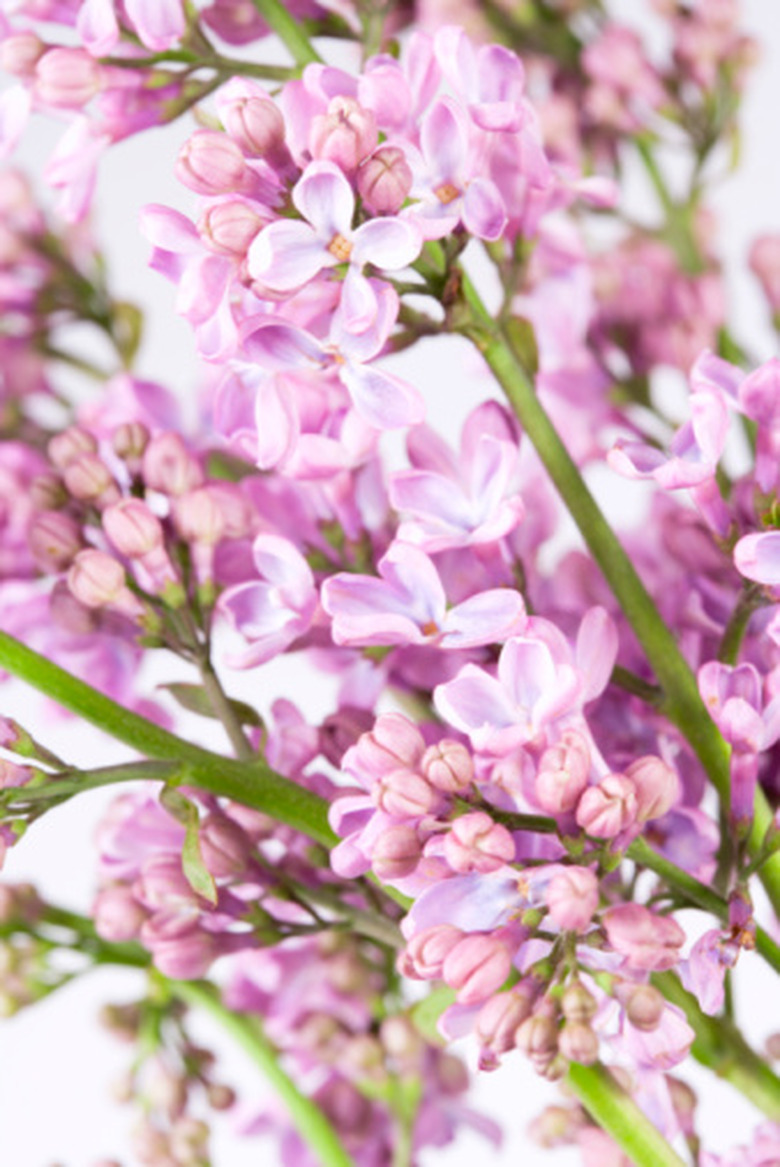How To Save A Dying Lilac Bush
Things Needed
-
Soil testing kit
-
Pruning shears
-
String
-
Water
-
Fertilizer
A dying lilac bush may appear weak or yield only a few spring blooms. This is commonly caused by overgrowth and poor plant nutrition, which may be remedied with heavy pruning and steps to ensure the soil contains vital nutrients. At times, however, the cause of death might be a bigger issue, involving disease or pest infestation. This, too, may be resolved with early detection.
Step 1
Rake away any dead branches and leaves, along with mulch, from the base when you notice the bush looks unhealthy in early spring after the growing season begins.
Step 2
Test the soil to see if it is too acidic, or lacking in calcium. The pH scale measures whether soil is more alkaline or acidic; a score of less than 7.0 on the pH scale is acidic, while anything higher than 7.0 is alkaline. Lilac bushes do not do well in acidic soil, so if your soil test returns an acidic score, you must adjust its pH level. Add 5 lbs. of ground limestone per 100 square feet of soil to raise the pH level by 1.0 point. To lower the pH level, add pine needles, shredded leaves, sulfur, sawdust or peat moss. Generally, you want the pH level to be around 7.0, but it is acceptable for lilac bush soil to be one-tenth of a point or so higher than that.
An inexpensive soil tester may be purchased at a plant nursery or garden center.
Step 3
Inspect the bush for pests and diseases. Voles and mice are the biggest pests of lilac bushes, especially in the winter, when they take cover under mulch and chew at the bottom bark and stems. Lilac bushes are also susceptible to a few diseases, powdery mildew being the most common. This occurs in humid and hot weather and right away should be treated about two to three times a week with a general purpose fungicide. Cases with major outbreaks will require elimination of all infected branches.
Step 4
Trim unhealthy branches after carefully selecting the five strongest branches and loosely stringing them at the base. Using garden shears, cut all other branches about 1 inch from the ground. Be careful not pull or tear away at any of healthy limbs. Remove string from remaining bushes.
Step 5
Fertilize the lilac bush. Use a fertilizer with a 5-10-5 nitrogen-phosphorous-potassium ratio on older plants that are not blooming. You may also use a 0-15-0 or 0-45-0 fertilizer. Fertilize once in the spring and once in the fall by digging a few holes in the soil next to each lilac plant and adding 1 cup of fertilizer to each hole. Use 2 cups if the plant is taller than 5 feet. Avoid overfertilization, as this, too, can cause death of the plant.
Step 6
Ensure the plant has proper drainage. Lilacs should not be overwatered, as too much water can drown the plant. It is also important that the bush not be underwatered, as it will not thrive in dry soil. Pay attention to the soil and lilac bush leaves to determine whether more water is needed. If the leaves are wilted or folding, watering is required. Or, scrape the top edge of the soil to check for dampness. If it is dry, you can water the bush. Add enough water for the soil to soak up without puddling.
Step 7
Watch for new buds on the branches the following spring. At this point, the plant might need to be fertilized again, but if new buds are growing and the plant looks healthy, no additional fertilizer is needed.
Warning
Do not place infected cuttings in compost as the infection may then be transferred to other flowers, fruits and vegetables.
